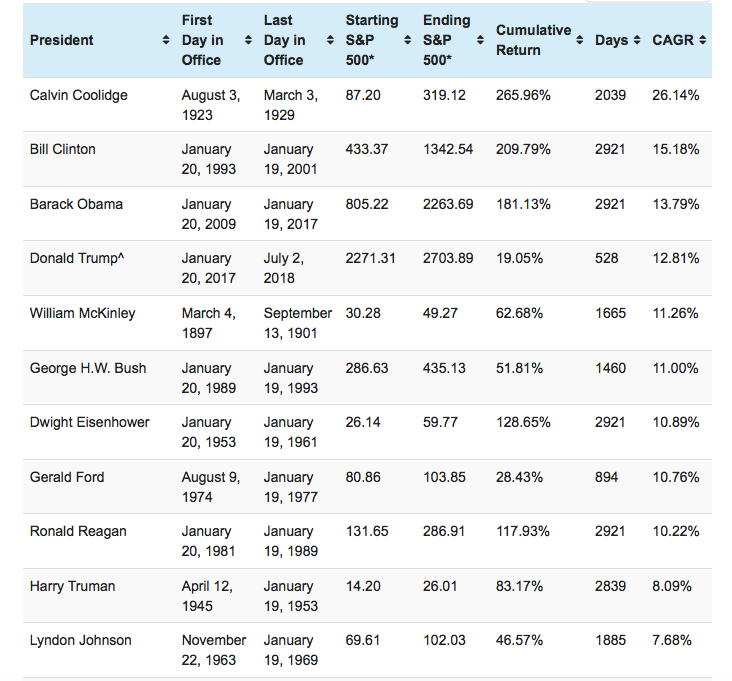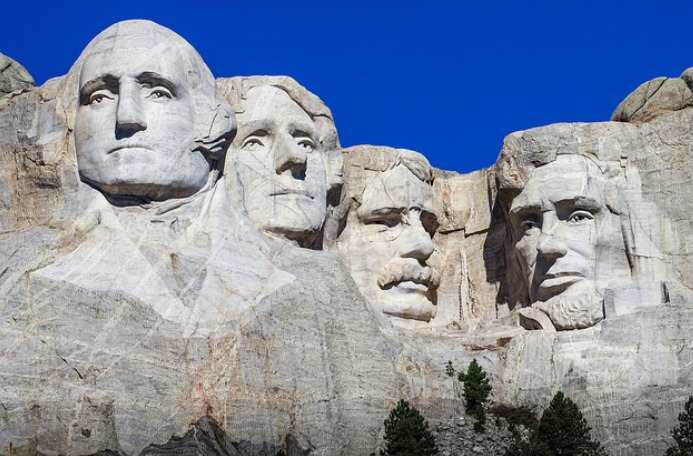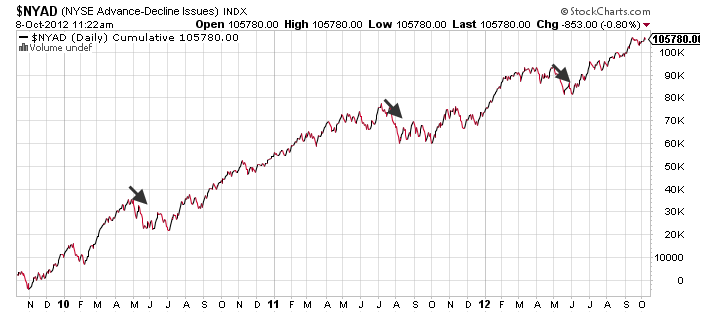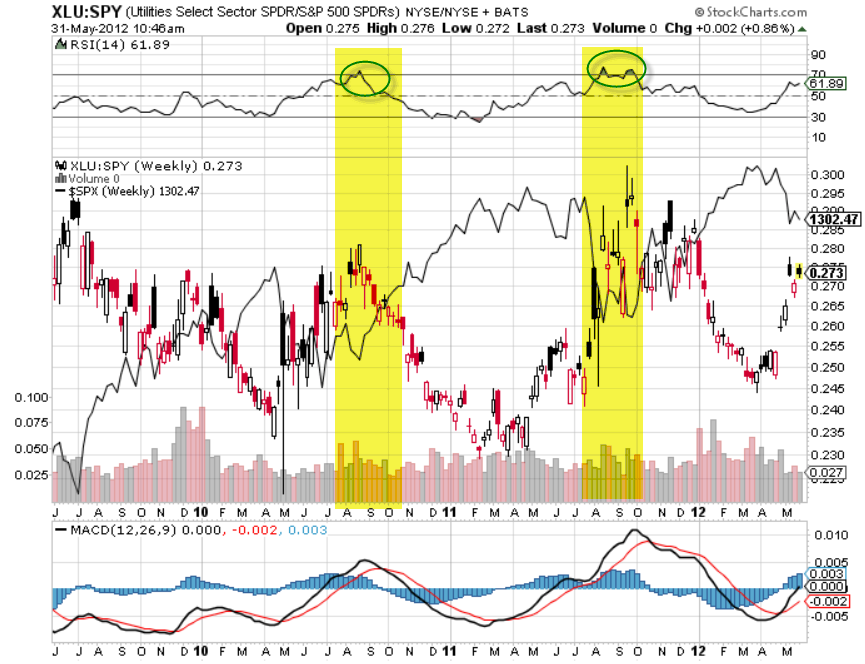Mount Rushmore features massive 60-foot-tall busts of celebrated presidents George Washington, Thomas Jefferson, Abraham Lincoln and Theodore Roosevelt, each chosen for their respective roles in preserving or expanding the Republic.
But if you were to make a Mount Rushmore for presidents based on stock market performance, none of these men would make the cut.
Let’s see what a “stock market Mount Rushmore” might look like. And while we’re at it, we’ll rank every president that we can realistically include based on the available data.

Caveats
The returns data for the top 12 market-performing presidents are for price only (not including dividends), so this tends to favor more recent presidents. Over the past half century, dividends have become a smaller portion of total returns due to their unfavorable tax treatment.
Furthermore, the data isn’t adjusted for inflation. This will tend to reward presidents of inflationary times (Richard Nixon, Jimmy Carter, Gerald Ford, etc.) and punish presidents of disinflationary or deflationary times (Franklin Delano Roosevelt, George W. Bush, Barack Obama, etc.)
And finally, presidents from Hoover to the present are ranked using the S&P 500, whereas earlier presidents were ranked using the Dow Industrials due to data availability.

Cruising Coolidge
At the very top of the list is Calvin Coolidge, the man who presided over the boom years of the Roaring Twenties. Coolidge, a hero among small-government conservatives for his modest, hands-off approach to government, famously said: “The chief business of the American people is business.”
In Coolidge’s five and a half years in office, the Dow soared an incredible 266%, translating to compound annualized gains of 26.1% per year.
Of course, the cynic might point out that Coolidge was also extraordinarily lucky to have taken office just as the 1920s were starting to roar… and to have retired just as the whole thing was starting to fall apart.
His successor Hoover was left to deal with the consequences of the 1929 crash and the Great Depression that followed.
Bubba Rally
The second head on Rushmore would be that of Bill Clinton. Clinton, like Coolidge, presided over one of the largest booms in American history, the 1990s “dot com” boom.
And Clinton, particularly during the final six years of his presidency, was considered one of the more business-friendly presidents by modern standards.
The S&P 500 soared 210% over Clinton’s eight years, working out to annualized returns of 15.2%.
Obama Years
Not far behind Clinton is Barack Obama, who can boast cumulative returns of 181.1% and annualized returns of 13.8%.
President Obama had the good fortune of taking office right as the worst bear market since the Great Depression was nearing its end. That’s fantastic timing. All the same, 181% cumulative returns aren’t too shabby.
Interestingly, the infamous “Trump rally” places Donald Trump as the fourth head on Mount Rushmore with annualized returns thus far of 12.8% It’s still early, of course, as President Trump is not even two years into his presidency.
And given the already lofty valuations in place when he took office, it’s questionable whether the market can continue to generate these kinds of returns throughout his presidency. But he’s certainly off to a strong start in my opinion.
After Trump, the next four presidents – William McKinley, George H.W Bush, Dwight Eisenhower and Gerald Ford – are clumped into a tight band, each enjoying market returns of between 10.8% and 11.3%.
And the top 10 is rounded out by Ronald Reagan and Harry Truman, with annualized returns of 10.2% and 8.1%, respectively.
Photo Credit: Christian Collins via Flickr Creative Commons
A more comprehensive version of this article covering all presidents back to 1889 was originally published on Kiplinger’s.




